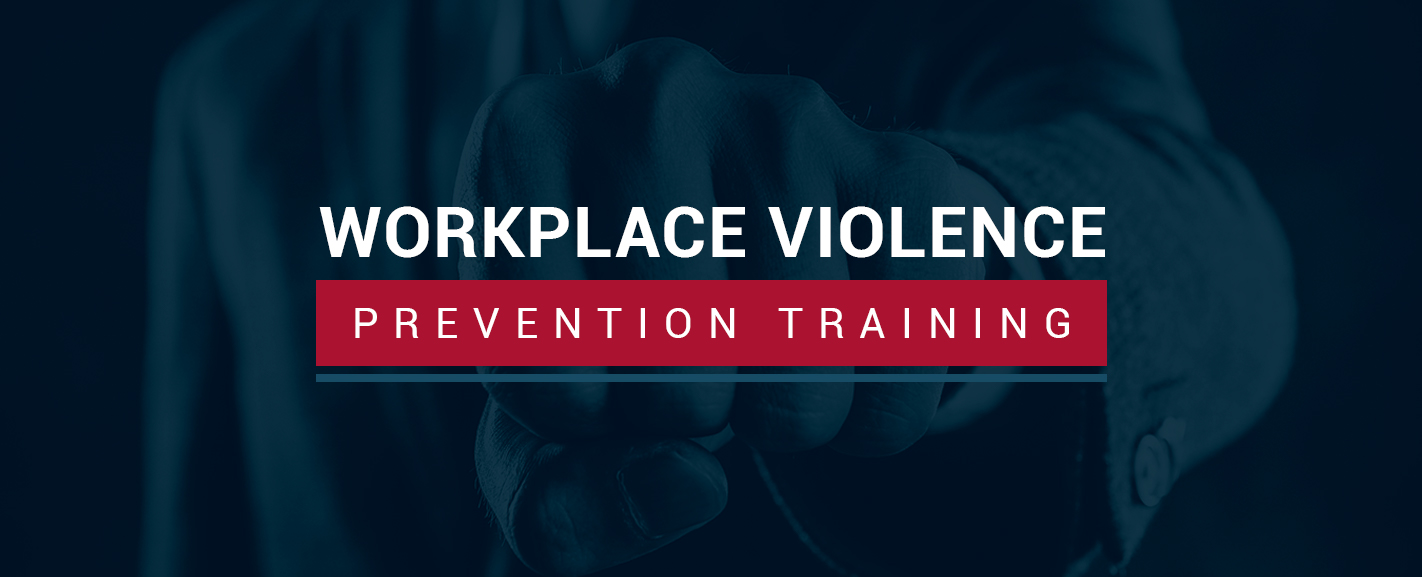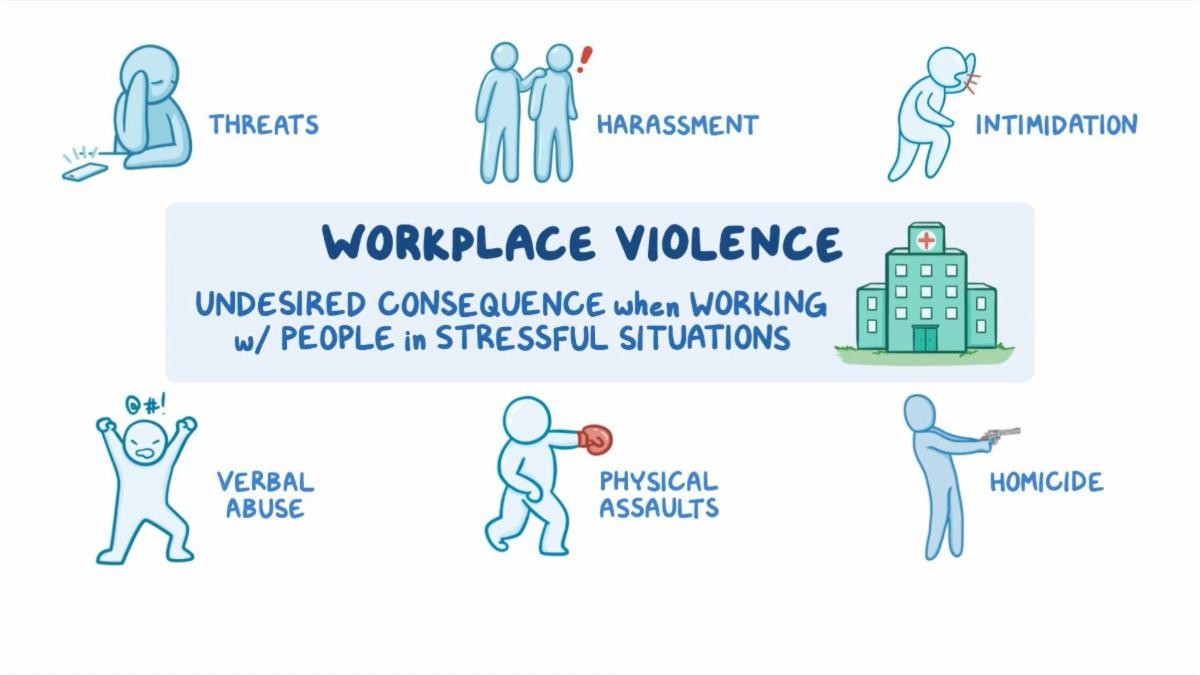Proven Techniques for Producing a Safe and Protect Work Environment Environment Through Violence Avoidance Actions
In the world of work environment security, the significance of implementing effective physical violence avoidance procedures can not be overstated. As organizations strive to grow atmospheres that are not only productive yet additionally risk-free for all workers, the need for proven methods in physical violence prevention becomes extremely important. By discovering methods such as conflict resolution training, emergency action planning, and fostering a society of security, workplaces can significantly boost their capability to mitigate prospective risks. These methods not only address the prompt issues surrounding office violence yet likewise add to long-lasting strategies for developing a protected and unified job environment.

Recognizing Work Environment Violence
To understand the dynamics of workplace physical violence, it is vital to analyze the numerous types and underlying factors adding to such events. Office violence can show up in different ways, including verbal dangers, physical assaults, and even casualties. Comprehending the forms this physical violence can take is crucial in establishing effective avoidance strategies.
One typical kind of work environment physical violence is physical aggression, which entails any kind of physical get in touch with planned to cause damage. This can vary from striking and pushing to a lot more extreme actions. Verbal hazards and harassment also make up office violence, producing an aggressive environment that can impact staff members' well-being and productivity.
Additionally, office violence can be fueled by numerous underlying factors such as tension, disputes, and business adjustments. Identifying these source allows companies to apply preventative measures that deal with the certain threats existing in their office.
Implementing Conflict Resolution Training
Comprehending the types and underlying aspects of office physical violence emphasizes the need for companies to focus on implementing conflict resolution training. Conflict resolution training equips employees with the required skills to identify, address, and de-escalate potential conflicts before they escalate into terrible scenarios. By providing staff members with reliable interaction methods, energetic listening techniques, and problem-solving approaches, organizations can encourage their labor force to browse conflicts and disputes constructively.
Effective problem resolution training not just improves workers' ability to take care of problems yet additionally promotes a culture of regard, understanding, and partnership within the work environment. Through role-playing workouts, situation analysis, and practical workshops, staff members can get hands-on experience in solving disputes peacefully and properly. california workplace violence prevention. In addition, dispute resolution training can help employees identify very early warning signs of possible violence, enabling them to take aggressive steps to prevent unpredictable circumstances.
Integrating problem resolution training as part of a company's comprehensive physical violence prevention technique demonstrates a dedication to creating a safe and secure workplace setting where conflicts are handled properly and violence is alleviated.
Developing Emergency Action Plans
Developing detailed emergency situation response plans is vital for making certain the safety and protection of employees in case of unpredicted events or emergency situations within the office. These strategies outline the required steps to be taken throughout situations such as all-natural disasters, medical emergencies, fires, active shooter circumstances, or various other hazards to the health of team member.
To create efficient emergency action strategies, companies should carry out complete threat analyses to recognize potential risks and vulnerabilities particular to their office. This information is after that utilized to develop procedures for emptying procedures, communication techniques, designated assembly factors, and functions and duties of staff members during emergencies. Regular training sessions and drills should be conducted to acquaint staff members with these strategies and guarantee a swift and coordinated response when required.
Furthermore, emergency situation action plans need to be on a regular basis evaluated and upgraded to line up with any modifications in the workplace atmosphere, staff duties, or potential hazards. By investing in the growth of robust emergency situation response strategies, organizations here can better shield their workers and decrease the impact of unpredicted events on the office.
Encouraging Coverage and Interaction
In promoting a society try here of safety and caution within the office, it is crucial to emphasize the significance of motivating reporting and communication among workers. Open up lines of communication produce a setting where staff members feel equipped to speak out about potential security problems without fear of consequences. Motivating coverage can aid identify and address problems before they rise right into significant incidents.
To promote reporting, companies need to develop clear coverage treatments and channels, ensuring that workers understand exactly how and where to report safety and security problems or cases. Educating sessions on recognizing warning signs of violence and the significance of reporting ought to be supplied on a regular basis. In addition, developing a non-punitive coverage system where staff members can report worries anonymously can better urge interaction.
Routine communication between management and employees is also essential in keeping a secure office. Administration must actively listen to staff member responses, address worries immediately, and offer updates on any actions taken. By cultivating a society of open communication and motivating coverage, organizations can proactively prevent workplace physical violence and produce a safer environment for all staff members.
Cultivating a Society of Safety
To grow an office atmosphere that prioritizes safety and security and infuses a feeling of collective responsibility, it is necessary to establish clear standards and assumptions regarding safety and security procedures and find here procedures. In addition, acknowledging and compensating individuals or groups that show exemplary commitment to safety can better strengthen the importance of prioritizing safety and security in the work environment.
Furthermore, leadership plays an essential duty in setting the tone for safety and security within an organization. When leaders constantly emphasize the worth of safety, workers are more probable to internalize these concepts and integrate them into their day-to-day routines. By showing a real commitment to safety and security through actions and choices, leaders can influence a society where safety is not simply a top priority but a core value accepted by all.
Verdict
Finally, the application of problem resolution training, emergency situation reaction plans, urging reporting and interaction, and fostering a culture of security are tried and tested tactics for creating a protected and risk-free office setting via violence prevention steps. By comprehending work environment physical violence and taking aggressive actions to address potential risks, organizations can efficiently alleviate the hazard of physical violence in the office and make certain the safety and well-being of their employees.
Verbal threats and harassment also constitute workplace violence, creating a hostile environment that can affect staff members' health and performance. california workplace violence prevention.
